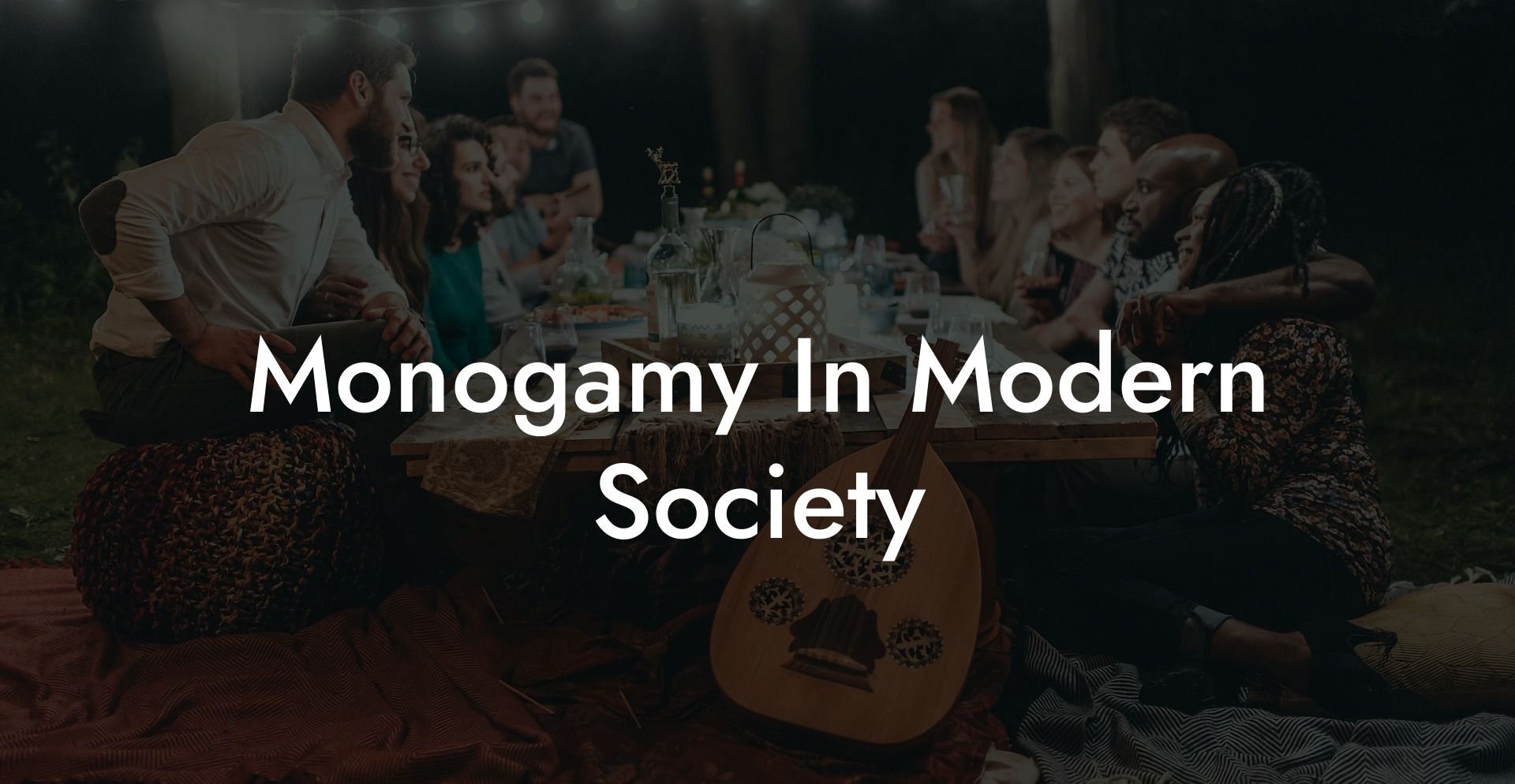Monogamy has long been the foundation of many relationships and societies, but does it still hold the same relevancy and importance in today's ever-changing world? In this article, we dive deep into the concept of monogamy in modern society, explore its effects on our relationships, and discuss the growing interest in alternative relationship structures like non-monogamy and polyamory.
Monogamy In Modern Society Table of Contents
Understanding Monogamy and Its Roots
Understanding Monogamy and Its Roots
Monogamy refers to the practice of being married or committed to just one person at a time. Historically, monogamy has been viewed as a natural and ideal state of being, with most cultures and religions supporting and encouraging the concept. However, the concept of monogamy has evolved over time, with various periods of history and different societies showing differing levels of acceptance and adherence to this idea.
The Evolution of Monogamy
Monogamy has taken on various forms and definitions throughout history, adapting to the changing cultural, societal, and economic landscapes. In prehistoric times, monogamy likely arose from the need for males to help provide resources and care for offspring, ensuring their survival. As societies became more complex and human relationships developed, the concept of monogamy continued to be shaped, ultimately becoming an essential part of modern society.
Monogamy's Role In Modern Society
Today, monogamy continues to play a significant role in our lives, despite changing attitudes and opinions on the matter. There are several reasons for this persistence, including the following:
Religious and Cultural Beliefs
Many religious ideologies, such as Christianity, Judaism, and Islam, promote monogamy as the ideal form of relationship. These beliefs contribute to societal norms and expectations, helping to maintain the notion that monogamy is the best option for many people.
Economic and Legal Factors
Many societies have laws and regulations that specifically cater to, and sometimes enforce, monogamous relationships. From inheritance laws to financial benefits offered to married couples, there is a range of economic and legal incentives for individuals to remain monogamous.
Emotional Security and Stability
Monogamous relationships provide emotional security and stability for many individuals. With one partner to rely on and trust, many people find solace in the idea of committing to a single person for a lifetime.
Non-Monogamy and Polyamory
With a growing number of individuals questioning traditional monogamous relationships and exploring alternative options, non-monogamy and polyamory have gained prominence in recent years. However, these relationship structures are not new concepts - they have existed throughout history, often dismissed or practiced discreetly.
Understanding Non-Monogamy and Polyamory
Non-monogamy refers to any relationship where individuals have multiple romantic or sexual partners with the consent and knowledge of all parties involved. Polyamory is a form of ethical non-monogamy where people have multiple consensual and loving relationships.
Why are Alternative Relationship Structures Gaining Traction?
There are various reasons for the growing popularity of non-monogamous and polyamorous relationships, including changing views around love, sex, and commitment, as well as a desire to challenge traditional societal norms.
Monogamy In Modern Society Example:
Consider the case of two married couples who decide to open up their relationships and explore non-monogamy. After discussing and setting boundaries, they each begin dating other people, while still maintaining their marriages. They find that, through honest communication and the exploration of new relationships, their primary connections are strengthened, rather than threatened.
As our understanding of relationships and societal norms evolves, it is crucial to remain open to discussing and exploring the various forms of love and commitment that may suit different individuals. Monogamy remains a significant factor in modern society, but alternative structures like non-monogamy and polyamory should not be ignored or dismissed. We hope that this article has provided you with valuable insights and encourages you to explore more about this topic on The Monogamy Experiment. Be sure to share this post with anyone who may be interested and browse our other guides for more engaging discussions on love, relationships, and commitment.













